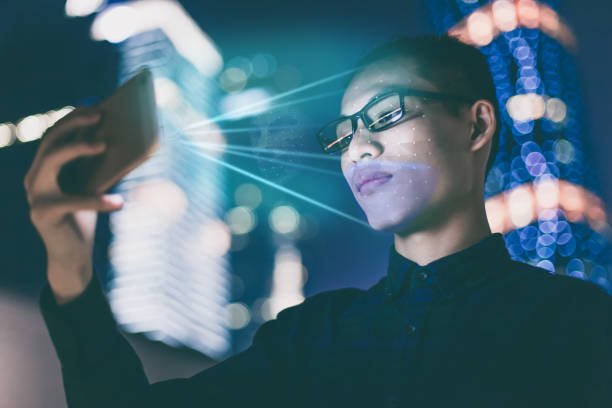Significance of Liveness Detection in Biometric Security & Spoof Detection

In the fast-paced and digital world where spoofed attacks or presentation attacks are becoming prevalent, it has become challenging to accurately authenticate identities. Cyber threats are increasingly affecting victims including individuals and businesses alike, stressing the need to develop sophisticated tools to detect spoofed attacks actively. Liveness detection comes forth as a beacon of security in the epoch of cyber threats, effectively authenticating individuals and warding off fabricated or fake identities.
What is Liveness Detection- A Sophisticated Defense Against Cyber Threats
Liveness detection, an essential component in biometric security systems is a sophisticated technique employed to confirm the liveness of the claimed identity. This security feature uses advanced techniques like motion analysis, texture analysis, or in-depth sensing to accurately recognize whether the individaul seeking access to systems is live or not. Biometric liveness detection is employed in facial recognition technology to precisely verify the credibility of the identities and ensure that only authorized individuals are granted access to services or privileges.
3D liveness detection adds an extra layer of security to identity verification by verifying the validity of the biometric sample and making sure that the biometric sample belongs to a live individual rather than a static or spoofed identity. Apart from verifying biometric modalities, biometric liveness detection analyzes subtle movements, or physiological responses to authenticate the liveness of the present individual.
Explore the Difference Between Liveness Detection & Facial Recognition
Biometric liveness detection and facial recognition are two advanced and sophisticated technologies employed to validate the authenticity of the claimed identity, but they address different aspects of ID verification. However, there is a slight difference between the operating mechanisms of both technologies. Facial recognition technology integrated with advanced AI algorithms and sophisticated machine learning tools validates the identity of an individual by comparing facial features against the available dataset of identities. 3D liveness detection confirms the presence and liveness of the individual by analyzing subtle movements and physiological responses.
To make it simple, facial recognition technology verifies the identity by asking “Who are you” while biometric liveness detection authenticates individuals by questioning “Are you there”. In short, both technologies are crucial to the ID verification process and enhance security by accurately authenticating genuine individuals.
Categories of Liveness Detection Employed for Accurate Authentication
3D liveness detection includes three main categories that validate the identity of the individuals in different ways.
- Active Liveness Detection
Active liveness detection confirms the presence of the individual seeking access to systems by analyzing subtle movements and expressions. The users are asked to perform certain actions like smiling, blinking, or moving their heads in asked directions. Active liveness is deemed highly accurate and reliable, however, this isn’t suitable for all environments as user cooperation is required to perform this process.
2. Passive Liveness Detection
Passive liveness detection doesn’t require individuals to perform certain actions it validates the presence of the users just by analyzing facial features using static images or live videos. This approach analyzes nearly 70 features of facial key points including skin textures, features, wrinkles, or micro-expressions. Passive liveness takes less time in authentication, however careful implementation is required to head spoofed or presentation attacks.
3. Hybrid Liveness Detection
Hybrid liveness detection combines elements of both active and passive liveness to offer a balanced approach, enhancing security and improving user experience. Many businesses integrate this hybrid approach with biometric security systems to enhance the usability, security, and effectiveness of authentication systems. This is contemplated as a better approach to be implemented in biometric security systems, as it is designed to counteract the vulnerabilities present in active or passive liveness.
How Facial Liveness Detection Enhances Security & Flags Spoofed Attacks
One of the primary ways in which biometric liveness detection considerably enhances the security of authentication systems is by heading off spoofed or fabricated identities. Simply, when deep fakes or presentation attacks are detected at the very initial stage, how cybercriminals would fulfill their objectives?
- This biometric security feature actively detects the presence of the claimed identity ensuring that only genuine and authentic individuals are granted access to services and systems.
- 3D liveness detection adds multi-layered security to authentication systems by safeguarding these systems against cyber attacks and fraudulent identities.
- Most importantly, liveness detection technology questions the liveness of the users and effectively distinguish between real and fake identities, increasing the overall reliability of the ID verification systems.
- It improves user experience and enriches confidence in advanced authentication systems, as they are certain that they are protected against the threats of ID fraud, mask attacks, or deep fakes.
Final Thoughts
As technology advances, so does the threat of deep fakes and spoofed attacks. Biometric liveness detection adds an extra layer of security to sensitive information and improves user experience. Owing to its accuracy and effectiveness, 3D liveness detection is used in various aspects of our daily lives including mobile applications, healthcare sectors, financial institutions, corporate security, and law enforcement. At its core, biometric liveness detection holds promising applications to effectively deter fraudulent activities.





